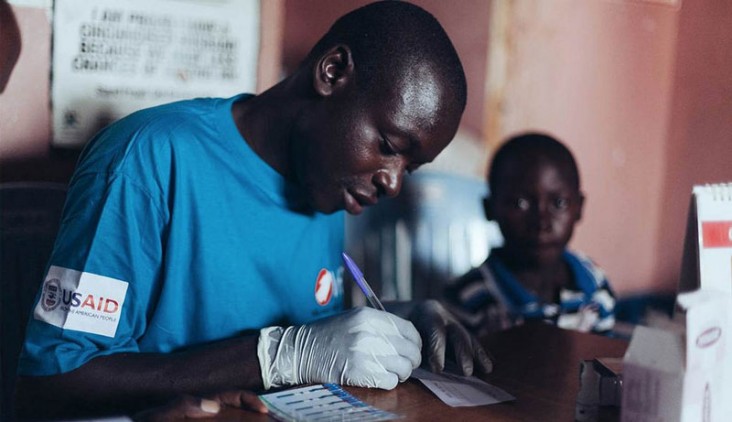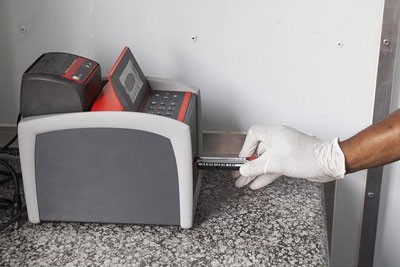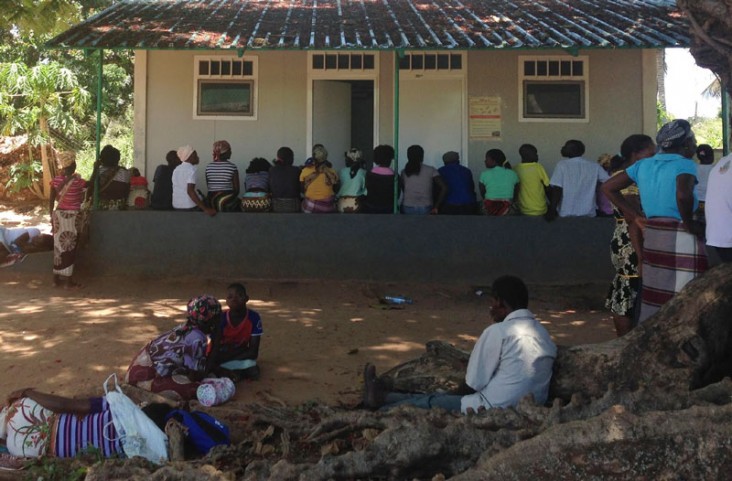- What We Do
- Agriculture and Food Security
- Democracy, Human Rights and Governance
- Economic Growth and Trade
- Education
- Ending Extreme Poverty
- Environment and Global Climate Change
- Gender Equality and Women's Empowerment
- Global Health
- Water and Sanitation
- Working in Crises and Conflict
- U.S. Global Development Lab

February 17, 2017 – The past 30 years has seen significant gains in combating the HIV and AIDS epidemic. Today, with more than 37 million people living with HIV, only about half of whom are on life-saving treatment, there exists a critical need to recommit to ending the epidemic. The U.S. Agency for International Development (USAID) supports the UNAIDS global 90-90-90 guidelines and is aware that addressing certain barriers, such as successful linking to and retention in care, is key to meeting these universal goals. From the burden of long wait times and frequent clinic visits, to the constraints of transportation costs and personal demands, the challenges faced by even the most compliant patient may be too overwhelming as they seek to receive lifelong antiretroviral therapy (ART).

USAID, through the U.S. President's Emergency Plan for AIDS Relief (PEPFAR), is working to find novel ways to ensure lifelong care and treatment for people living with HIV, particularly for people in the regions hardest hit by the epidemic including sub-Saharan Africa. In Mozambique, where about 10 percent of the population is living with HIV, USAID partner ICAP evaluated challenges related to patient linkage and retention in care through a study called Engage4Health. Core to its values as a development agency, USAID emphasizes the importance of partnerships and country ownership and, through Engage4Health, collaborated with the Mozambique Ministry of Health, the Mozambique National Institute of Health and the local non-governmental organization Center for Collaboration in Health.
“By working with the Mozambique Ministry of Health, we were able to work with providers at the health facility level, allowing us to build capacity and train local staff. Ultimately, it is the with the goal of having positive impact on individuals and delivering quality service for clients and communities that drives us,” said Januario Reis, Adult Clinical Support, Infectious Disease, USAID Mozambique.
From April 2013 to June 2016, with 2,004 participants, the study examined the effectiveness and acceptability of evidence-based interventions designed to overcome barriers that prevent linkage to and retention in HIV care among newly diagnosed adults in Mozambique.

Participants were randomly assigned to the standard of care or the Engage4Health intervention. The standard of care included lab referrals for testing of CD4 counts after enrolling in care, with the results of testing returned 2–4 weeks later. If participants were deemed eligible for ART, they would receive recurring laboratory tests and one to three ART counselling session in the HIV clinic, 1–2 months after HIV care enrollment. The Engage4Health interventions included immediate CD4 testing for those who tested positive for HIV, accelerated ART initiation (including receiving pre-ART counseling, guidance to enroll in HIV care and once enrolled in care, prioritization of medical appointments and immediate initiation on ART based on CD4 count of less than or equal to 350 cells/microliter). Interventions for keeping patients in care included receiving health messages via short message services, regardless of ART eligibility, as well as appointment reminders once they were linked to care. A subset of those randomly assigned to the interventions also received a financial incentive: mobile phone airtime vouchers worth approximately US$ 5.
The majority of study participants found the Engage4Health intervention package with and without financial incentive to be helpful for supporting linkage to and retention in HIV care. 94 percent of participants in the interventions group were linked to care within 1 month of diagnosis as opposed to 63 percent in the standard care group. After 12 months of diagnosis, the intervention groups remained in care at 59 percent and 55 percent for those with and without financial incentive, respectively. In comparison, 45 percent who received the standard of care were retained in treatment.
Overall, the participants in the intervention group had better outcomes. Financial incentives were found to have no additional impact on increased linkage and retention. Both groups fell short of achieving the second UNAIDS goal of 90 percent of people diagnosed with HIV infection receiving sustained ART. This indicates that more needs to be done to alleviate the challenges associated with linkage and retention. Sustained treatment and viral suppression are key to an AIDS-free Generation.







Comment
Make a general inquiry or suggest an improvement.